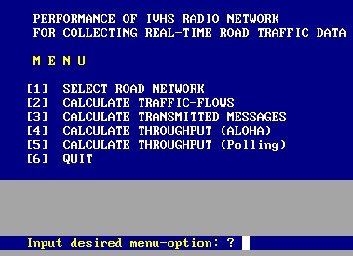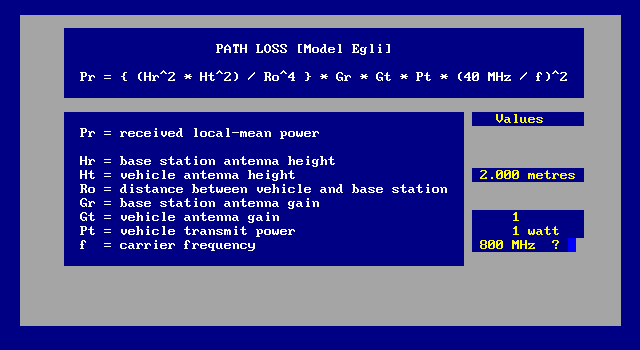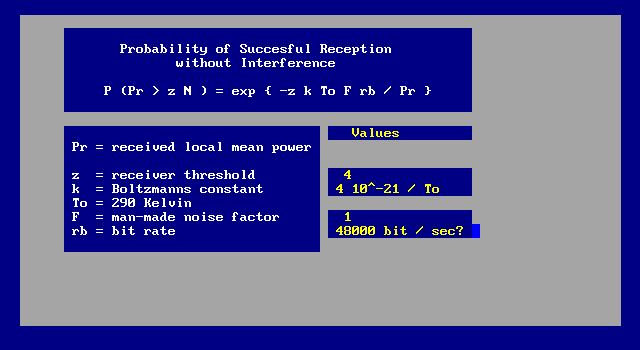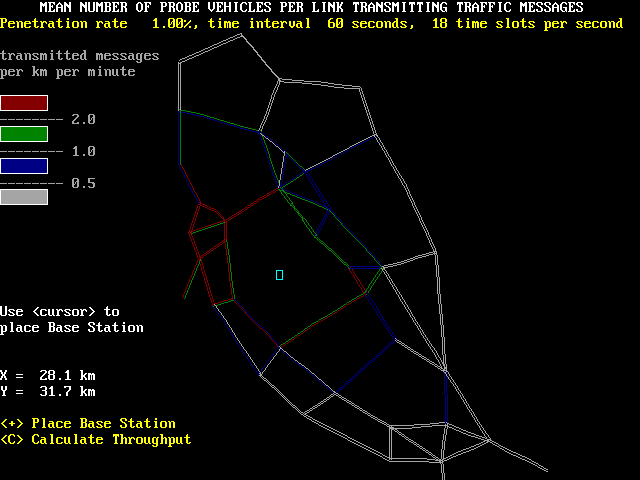
Disclaimer: The software has no guarantee of any type whatsoever. The user agrees that neither the publisher nor the editor / authors will be held liable for any damages, including lost profits, savings, or any incidental or consequential damages arising out of the use or presence of any program.


Egli's Model assumes that in macro-cellular links over smooth, plane terrain, the received signal power (expressed in dB) decreases with "40 log d". Also a "6 dB/octave" height gain is experienced: doubling the height increases the received power by a factor 4.
Path loss is computed from the semi-empirical model
![]()
Moreover Rayleigh fading is considered in the signal capture model. Shadowing is not taken into account.

The default parameters are taken similar to the U.S. IS54 digital cellular phone system.

The fleet of probe vehicles is taken as a certain percentage of all vehicles. Probes are assumed to be equipped with positioning and radio communication equipment.
The probe vehicles are assumed to generate traffic messages according to the supply or the demand transmission scheme. The transmitted probe messages contain the position of the probe vehicle and the link travel time experienced.
The analysis used to compute the above figure focuses on one particular road link a of the freeway with a traffic flow of q_a
vehicles per hour and average travel time of Z_a minutes. Using Little's Law, the
expected number of vehicles present on road link a is q_a Z_a. We call this the link traffic
density.
For a penetration grade p, the expected number of probe
vehicles that are present in segment a is
p q_a Z_a

Little is known about how many probe messages are needed to reliably estimate the real-time traffic situation. presumably Automatic Incident Detection requires the largest throughput, ATMS also requires quite detailed information, while ATIS information system are less demanding. This menu allows the user to set his own criteria.